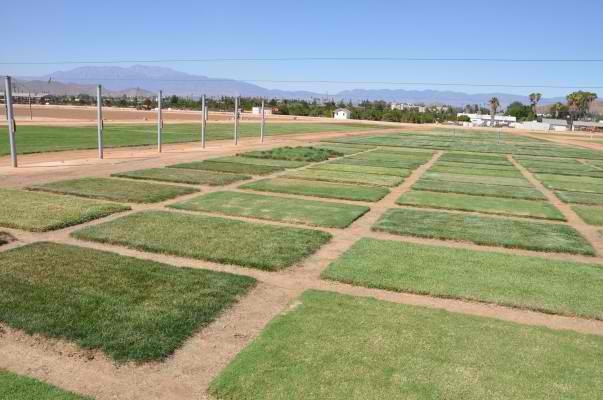
Turfgrass and landscape professionals will gather tomorrow, Sept. 13, at UC Riverside to learn about the latest innovations in turfgrass research and management. The 2012 Turfgrass and Landscape Research Field Day will start at 7 a.m.
One of the featured tour stops will be a research plot in which 18 plant species grown as landscape groundcovers are being evaluated for their ability to perform with low amounts of water. Dennis Pittenger, UC Cooperative Extension advisor for California’s Central Coast and South Region, and UC Cooperative Extension specialist Donald Merhaut, both based in the Department of Botany & Plant Sciences at UC Riverside, are conducting this study.
“Currently the plant materials are receiving about one-half the amount of water normally required by a tall fescue lawn, and all but three or four species appear to perform acceptably with this limited amount of water,” says Pittenger. “However, we will continue this treatment for another year to gain a full evaluation of these species' response to long-term limited irrigation.”
Residential water use totaled 5.9 million acre feet in 2005. California Assembly Bill 1881 resulted in California enacting an ordinance on January 1, 2010, reducing the evapotranspiration adjustment factor (ETAF) from 0.8 to 0.7 in new landscapes over 2,500 square feet.
David Fujino, executive director of the California Center for Urban Horticulture at UC Davis, Janet Hartin, UC Cooperative Extension advisor for San Bernardino and Los Angeles counties, and Loren Oki, UC Cooperative Extension specialist in the Department of Plant Sciences at UC Davis, received $450,000 from the California Department of Water Resources to reduce water waste and increase the landscape industry’s adoption of the new standard.
With the field assistance of William Baker and Associates, Fujino, Hartin and Oki, along with UC Cooperative Extension advisors Karrie Reid, Chuck Ingels, Mary Bianchi, and Darren Haver are setting up 30 large demonstration sites at publicly and commercially maintained landscape locations throughout the state that exemplify research-based best management practices. A variety of ornamental plants with varying evapotranspiration rates growing under a wide array of plant densities and microclimates are growing at the sites.
Demonstration sites can be seen at the following locations:
- Intel, Folsom
- Franchise Tax Board, Capitol Park, Sacramento,
- Stockton Golf and Country Club
- Woodbridge Golf and Country Club
- Fair Oaks Horticulture Center, Sacramento,
- Mission Oaks Parks and Recreation District, Sacramento
- City of Tracey
- University of California Santa Barbara
- City of Lakewood
- City of Murrieta
- City of Palm Desert
- Thunderbird Country Club, Rancho Mirage
- California Baptist University
- City of Santa Barbara
- City of Lompoc
At the field day, Hartin, an environmental horticulture expert, will talk about best management practices that large public and private landscape and irrigation managers can implement to meet the 0.7 ETAF for landscapes over 2,500 square feet.
Specific practices that she will discuss include hydrozoning (placing plants with similar water needs together), irrigation scheduling based on water requirements of the various zones, optimizing sprinkler system distribution uniformity, drip irrigation when appropriate, weed control and proper use of soil amendments and mulch.
The event will be held at the university’s Turfgrass Research Facility at 1060 Martin Luther King Blvd. in Riverside.
“With the addition of new research areas, UCR now has a state-of-the-art, second-to-none facility to study irrigation and salinity effects on turfgrass and landscape plants,” says James Baird, a UC Cooperative Extension specialist in the Department of Botany and Plant Sciences at UC Riverside, who is leading the field day. “UCR is addressing the challenges of maintaining turf and landscape plants with diminishing water resources by identifying: drought tolerance among new and existing germplasm; commercial products that help save water; and best management practices using recycled and alternate water sources for irrigation.”
Registration for the field day costs $100, which includes lunch. To register, view the agenda or get directions for tomorrow’s field day, go to http://ucanr.org/sites/turfgrassfieldday.